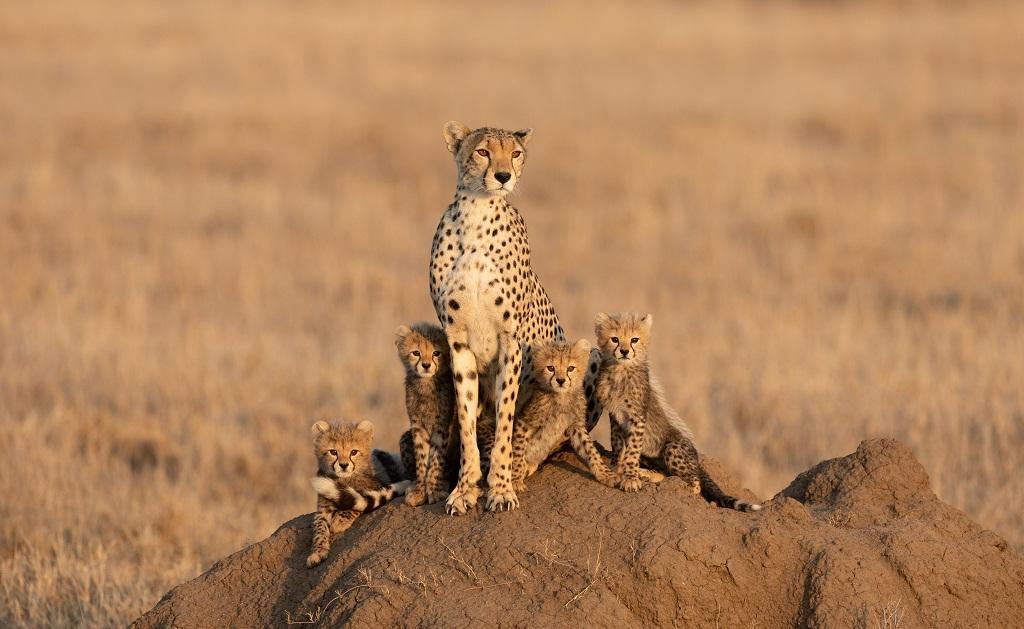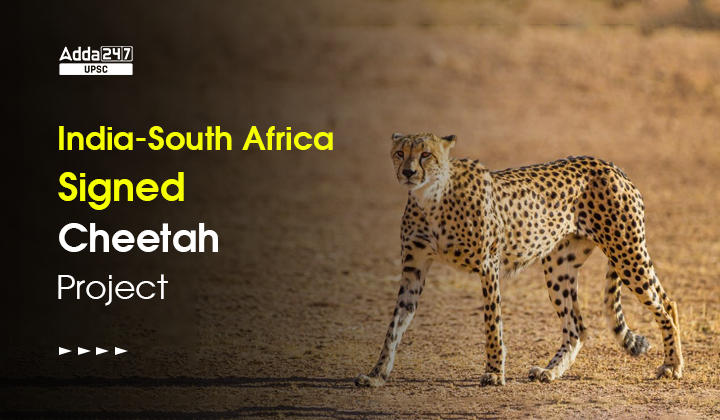Table of Contents
India-South Africa Cheetah Pact 2023: In This article, we are using the headline – ”India-South Africa Cheetah Pact 2023” as India and South Africa (SA) signed a Memorandum of Understanding (MoU) to translocate more than 100 cheetahs to India over the next decade.
Relevance Of India-South Africa Cheetah Pact 2023: GS Paper 3: Environment- Conservation, environmental pollution and degradation.
What is COP 15 of Convention on Biodiversity(CBD)?
India-South Africa Cheetah Pact 2023 Context
In News
On January 26, 2023, the South African Government confirmed in a press release that India and South Africa (SA) signed a Memorandum of Understanding (MoU) to translocate more than 100 cheetahs to India over the next decade.
Background
In September 2022 eight cheetahs arrived in India from Namibia under an ambitious project to reintroduce the big cats starting from Madhya Pradesh’s Kuno National Park.
PM Modi Released Cheetahs in Kuno National Park
Key Highlights Of India-South Africa Cheetah Pact 2023
An MOU Signed: India and South Africa (SA) signed a Memorandum of Understanding (MoU) to translocate more than 100 cheetahs to India over the next decade.
What Is The MOU On Cheetahs? The Memorandum of Understanding (MoU) on Reintroduction of Cheetah to India facilitates cooperation between the parties to establish a viable and secure cheetah population in India. It also promotes conservation and ensures that expertise is shared and exchanged and capacity is built, to promote cheetah conservation

12 Cheetahs Every Year: The MoU between India And South Africa on translocating of Cheetahs stating that 12 big cats may arrive in India sometime in February 2023. Also, the plan is to translocate 12 cheetahs every year for the next eight to 10 years to establish a healthy and genetically diverse cheetah population in India.
Review Mechanism In Every 5 Years: The terms of the MoU on Cooperation in the Re-introduction of Cheetah to India will be reviewed every five years.
19th Meeting of NTCA: 50 Cheetah to be introduced in next 5 years
Significance of Collaborating With South Africa on Cheetahs
- As part of the India-South Africa Cheetah Pact 2023, the two countries(India & SA) will collaborate and exchange best practices in large carnivore conservation through the transfer of technology, training of professionals in management, policy, and science, and establish a bilateral custodianship arrangement for cheetah translocated between the two countries.
- Restoring cheetah populations is considered to be a priority for India. It will have vital and far-reaching conservation consequences, which would aim to achieve a number of ecological objectives — including re-establishing the functional role of cheetahs within their historical range in India and improving the livelihood options and economies of the local communities.
| The Extinction Journey of Cheetah in India
Hunting:
Near extinction under the British Raj: they preferred to hunt big game, such as tigers, bison and elephants.
Extinction of Cheetah from India:
|
Cheetahs in India: Tracing the Extinction of Cheetah in India and Re-introduction policy



 TSPSC Group 1 Question Paper 2024, Downl...
TSPSC Group 1 Question Paper 2024, Downl...
 TSPSC Group 1 Answer key 2024 Out, Downl...
TSPSC Group 1 Answer key 2024 Out, Downl...
 UPSC Prelims 2024 Question Paper, Downlo...
UPSC Prelims 2024 Question Paper, Downlo...




